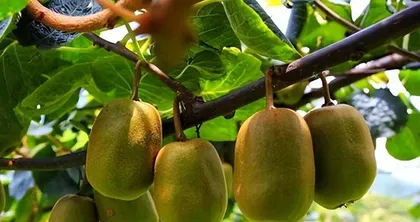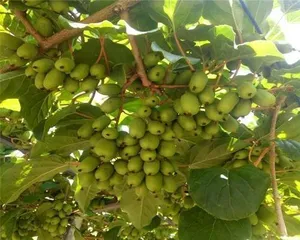The hardy kiwi is a common fruit tree with delicious and nutritious fruits. How to propagate and cultivate the hardy kiwi is an important question. This article will introduce the cutting propagation techniques and seedling care methods for the hardy kiwi to help readers understand the skills and key points of its cultivation.

Hardy Kiwi Cutting Propagation
1. Preparation before cutting: Select a healthy hardy kiwi tree and take new soft cuttings in autumn or spring for propagation.
2. Treatment of cutting material: Cut the soft branches into cuttings about 15 cm long, leaving 2-3 leaves at the bottom.

3. Preparation of cutting substrate: Choose a substrate rich in organic matter and loose and breathable, such as river sand and leaf mold.
4. Cutting method: Insert the prepared cuttings into the substrate, then water thoroughly and cover with plastic film.
5. Post-cutting management: Keep the substrate moist, well-ventilated, and avoid direct sunlight. You can use a growth light to increase the light intensity.

Hardy Kiwi Seedling Care
1. Temperature control: For the first 10 days after cutting, it is advisable to control the temperature for growth at around 20°C.
2. Proper watering: Avoid too much or too little water. Keep the soil moist but not waterlogged.
3. Fertilization measures: Apply an appropriate amount of organic fertilizer during the peak growing season to increase the supply of nutrients.
4. Pest and disease control: Hardy kiwi seedlings are susceptible to pests and diseases such as aphids and Phytophthora. Timely control measures should be taken.
5. Pruning: Proper pruning during the seedling stage can promote branching and increase the number of branches.
6. Pollination method: Hardy kiwi seedlings require artificial pollination. Gently apply pollen to the stigma with a fine brush.
7. Wound treatment: Wounds are prone to occur during seedling cultivation and should be treated promptly, such as applying wound healing agents.
8. Light attention: Pay attention to light conditions during the seedling growth process. Maintain a suitable light intensity and avoid direct sunlight.
Conclusion: Through the introduction of this article, readers can understand the cutting propagation techniques and seedling care methods for the hardy kiwi, and master the skills and key points of its cultivation. It is hoped that this will be helpful to fruit growers.